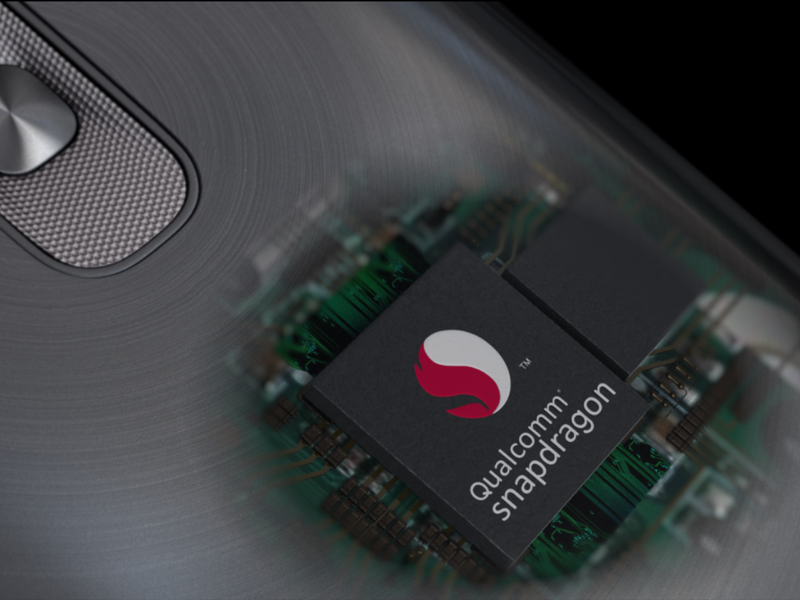See what Qualcomm's new Adreno GPU will add to next year's Snapdragon 820

Qualcomm has unveiled its new and upcoming Adreno 530 and 510 GPUs. The next generation in mobile graphics from the company will offer improvements in both overall performance and imaging. These new chips will be bundled with the Snapdragon 820 and 620/618 respectively, which are set to arrive in 2016 with the launch of new mobile hardware.
The Adreno 530 is billed as being 40% faster over the current Adreno 430, but sheds 40% off power consumption when put under the same workload. Any improvement made in both departments is always welcomed by mobile users. Qualcomm also states the new Adreno series will support 64-bit virtual memory addressing for software that takes full advantage of the processing architecture.
Part of what will make the Snapdragon 820 experience more advanced is the 14-bit Qualcomm Spectra ISP dual-imaging signal processing unit. This advancement is set to produce "superior image quality", supporting up to 3 simultaneous cameras. Just in case you'd like to take a selfie, alongside the blissful landscape. There's also the usual improvements made to power efficiency.
See the press release for more details.
Qualcomm Introduces Next-Generation GPU Architecture and Image Signal Processor for the Ultimate Graphics and Mobile Camera Experience
LOS ANGELES, Aug. 12, 2015 /PRNewswire/ -- SIGGRAPH 2015 -- Qualcomm Incorporated (NASDAQ: QCOM) today announced that its subsidiary, Qualcomm Technologies, Inc. (QTI), has introduced its next-generation visual processing technology with new versions of its graphics processing unit (GPU) and image signal processing (ISP) unit, to deliver significant advancements in performance, power efficiency and user experience to Qualcomm® Snapdragon™ processors. The new Qualcomm® Adreno™ 5xx GPU architecture delivers increased speed and efficiency over the previous generation and supports stunning high-definition mobile graphics while introducing general-purpose compute co-processing for exceptionally low power consumption. The first two GPUs available on the new architecture, the Adreno 530 and Adreno 510, will be available integrated within the forthcoming Snapdragon 820 and Snapdragon 620/618 processors. In addition, Snapdragon 820 will also debut the new 14-bit Qualcomm Spectra™ image signal processing (ISP) unit, designed to support superior DSLR-quality photography and enhanced computer vision. Devices based on Snapdragon 820 are expected to be available in 1H 2016. Qualcomm Snapdragon, Qualcomm Adreno and Qualcomm Spectra are products of QTI.
"We're significantly enhancing the visual processing capabilities of Snapdragon to support next-generation user experiences related to computational photography, computer vision, virtual reality and photo-realistic graphics on mobile devices, all while maximizing battery life," said Tim Leland, vice president, product management, Qualcomm Technologies, Inc. "Qualcomm Spectra ISP, together with our Adreno 5xx-class GPU, brings an entirely new level of imaging to smartphones, and is designed to allow Snapdragon-powered devices to capture ultra-clear, vivid photos and videos regardless of motion and lighting conditions and display them with the color accuracy that nature intended. In addition, as emerging growth segments such as automotive demand more immersive visual experiences, Snapdragon 820 will enable the next generation of infotainment, computer vision and advanced processing for instrument clusters."
Designed for scalability, the Adreno 5xx architecture is the foundation of Qualcomm Technologies' next-generation custom GPUs and is the successor to the Adreno 4xx family. Newly integrated within the Snapdragon 820, the Adreno 530 is the highest-performance GPU ever designed by Qualcomm Technologies, providing superior experiences with:
Get the Windows Central Newsletter
All the latest news, reviews, and guides for Windows and Xbox diehards.
- Up to 40 percent lower power consumption and 40 percent faster performance for both graphics and GPGPU compute when compared to the Adreno 430;
- Leading-edge capabilities in graphics and compute APIs including OpenGL ES 3.1+AEP (Android Extension Pack), Renderscript, as well as the new OpenCL 2.0 and Vulkan standards. Vulkan minimizes driver overhead and enables multi-threaded performance on mobile and embedded platforms;
- Support for 64-bit virtual addressing, allowing for shared virtual memory (SVM) and efficient co-processing with 64 bit CPUs;
- Improved fine-grain power management, new rendering, compositing and compression techniques to enable higher performance at lower power consumption and reduced DRAM bandwidth;
- Up to 4K HEVC video support at 60fps over HDMI 2.0 to Rec. 2020 ultra-high definition (UHD) displays and TVs;
- Improved Qualcomm® EcoPix™ and Qualcomm® TruPalette™ support for longer battery life and superior pixel quality; and
- Software compatibility between Adreno 530 and Adreno 510.
Introduced with the Snapdragon 820, Qualcomm Spectra ISP is Qualcomm Technologies' most advanced dual-imaging signal processing unit to-date, integrated and designed to provide best-in-class camera image quality and end-user benefits, including:
- Superior image quality, with more natural skin tones via advanced, 14-bit dual ISPs supporting up to 3 simultaneous cameras (e.g. one facing the user, and two rear facing), and up to 25 megapixels at 30 frames per-second with zero shutter lag;
- Improved photos with Qualcomm Spectra ISP's flexible hybrid autofocus framework and multi-sensor fusion algorithms supporting next generation computational photography;
- Improved power efficiency when compared to previous generations, better noise immunity and higher throughput via advanced compression techniques and use of the latest MIPI serial C-PHY interface; and
- Next generation Computer Vision and other use cases via direct-to-DSP raw bayer data streaming and pre-processing capabilities.

Rich Edmonds was formerly a Senior Editor of PC hardware at Windows Central, covering everything related to PC components and NAS. He's been involved in technology for more than a decade and knows a thing or two about the magic inside a PC chassis. You can follow him on Twitter at @RichEdmonds.